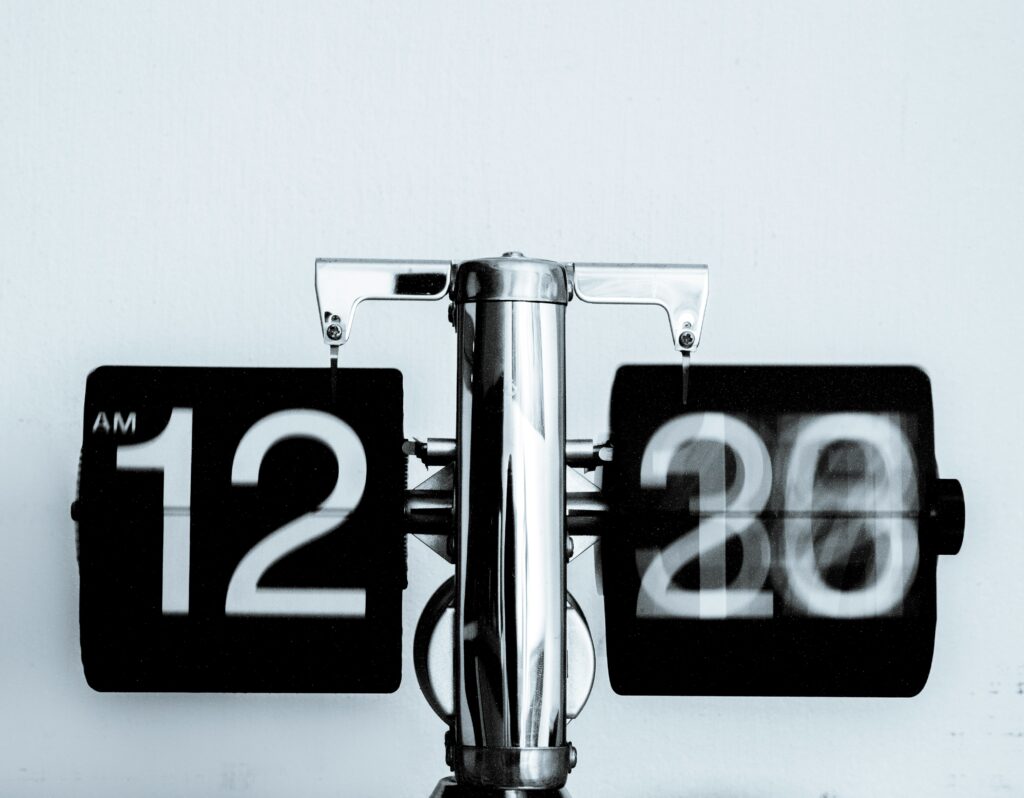By
People Are Only Just Realizing What AM And PM Mean
https://ift.tt/OU2yAmN
In the rhythm of daily life, the terms “AM” and “PM” glide by unnoticed, simple guardians of our schedules and routines. Yet, beneath their familiar veneer lies a fascinating labyrinth of history and misconception, waiting to be uncovered. Recently, a spark of curiosity ignited by a viral social media post has led many to question what they thought they knew about these age-old time markers. What do these terms really stand for, and how did they come to dominate our clocks?
Misconceptions and Revelations
The terms “AM” and “PM” are so ingrained in our daily lives that few of us stop to consider their true origins or meanings. Yet, misconceptions abound, with some of the most popular yet incorrect beliefs being that “AM” stands for “After Midnight” and “PM” means “Past Midday.” These interpretations, while intuitive, do not align with historical facts.
In reality, “AM” and “PM” derive from Latin terms used in ancient timekeeping. “AM” stands for “Ante Meridiem,” meaning “before midday,” and “PM” translates as “Post Meridiem,” or “after midday.” This system divides the 24-hour day into two 12-hour segments, crucial for distinguishing between morning and afternoon times in a clear and organized manner.
Social media, especially platforms like TikTok, have played a significant role in spotlighting these misconceptions. For instance, a TikTok video questioning the meanings of AM and PM went viral, illustrating the widespread curiosity and varying degrees of misunderstanding about these commonplace terms.
Despite their clarity, the use of AM and PM can sometimes lead to confusion, particularly around the transitions of noon and midnight. The terms themselves do not logically apply to these moments—midnight isn’t after midday, nor is noon before it. Thus, to avoid ambiguity, it’s recommended to refer to these times simply as “12 noon” and “12 midnight” instead of using 12 AM or 12 PM, which can lead to misinterpretations.

Social Media Spotlight
The exploration of AM and PM found a new audience on TikTok, where a post by Amaya Clarke unexpectedly vaulted these timekeeping abbreviations into viral fame. The simple question, “What do AM and PM mean?” resonated with millions, sparking a flood of replies and shares as users expressed their astonishment and humor upon learning the actual meanings of these everyday terms.
Amaya’s video, highlighted with a playful tone and genuine curiosity, captivated a diverse audience, illustrating the power of social media to educate while entertaining. The responses varied widely, with some users playfully admitting their previous misunderstandings, such as assuming AM stood for “After Midnight” or PM as “Past Midday,” underscoring the common misconceptions surrounding these terms.
This instance on TikTok not only brought to light the widespread lack of awareness about the Latin origins of ante meridiem (AM) and post meridiem (PM) but also underscored the platform’s role in disseminating knowledge and sparking dialogue across a global audience. The interaction highlights a fascinating aspect of digital culture: social media’s ability to transform mundane topics into engaging discussions that reach across different cultures and time zones.
Practical Guidance and Timekeeping Anomalies

Navigating the nuances of the 12-hour clock, particularly around the ambiguous times of 12 AM and 12 PM, requires clear communication and a good grasp of timekeeping principles. The confusions surrounding “midnight” and “noon” can lead to practical issues in scheduling and planning. Here are some strategies to minimize misunderstandings:
- Use Clear Designations: Instead of referring to 12 AM or 12 PM, it’s advisable to use “midnight” and “noon.” This avoids the ambiguity since neither 12 AM nor 12 PM clearly belongs to the periods before or after midday.
- Adopt the 24-Hour Clock: For clarity, especially in professional and international contexts, using the 24-hour clock (or military time) eliminates confusion. Midnight is represented as 00:00, and noon as 12:00, making it clear which part of the day is being referred to.
- Double-Check and Confirm Times: When scheduling appointments or meetings, especially with participants across different time zones, confirm the intended times explicitly. This helps ensure everyone is on the same page and reduces the risk of missed or misaligned commitments.
- Educational Efforts: Ongoing education on the proper use of AM and PM and the benefits of the 24-hour clock can help mitigate common confusions. Many digital tools and devices default to the 24-hour format, supporting this transition and helping users adapt to a more precise method of timekeeping.
- Practical Tools and Digital Assistance: Utilizing digital calendars and scheduling tools that support the 24-hour format can help avoid ambiguity. These tools often offer the option to display times in both 12-hour and 24-hour formats, allowing users to choose the one that best suits their needs and reduces errors in time interpretation.
Beyond AM and PM: A Journey Through Timekeeping
The journey of timekeeping stretches back thousands of years, marking a profound evolution from ancient civilizations to modern technologies. Initially, humans relied on natural phenomena like the position of the sun to measure time. Sundials, which use the sun’s shadow to indicate time, were among the earliest devices, with evidence of their use in ancient Egypt as far back as 1500 BCE. These early methods provided a rudimentary means of dividing the day but were limited to daylight hours.
As civilizations advanced, the need for more precise timekeeping led to significant innovations. Mechanical clocks, first appearing in Europe during the 14th century, marked a pivotal shift. These clocks, driven by weights and regulated by a verge-and-foliot escapement, were initially installed in towers of Italian cities. Despite their improvements over sundials, they were not very accurate due to the variable force and friction affecting their mechanisms.
The introduction of the pendulum clock by Christiaan Huygens in 1656 revolutionized accuracy in mechanical clocks, achieving an error of less than one minute per day. This was a drastic improvement from earlier mechanical clocks, which could be off by several minutes a day. The refinement of clock mechanics continued with developments like the balance wheel and the spring assembly, allowing for the creation of portable watches.
The 20th century saw another significant advancement with the introduction of quartz watches. Quartz crystals, due to their piezoelectric properties, vibrate at a consistent frequency when voltage is applied, providing a highly accurate and stable base for timekeeping. This development pushed forward the popularity of digital watches and devices, integrating precise timekeeping into everyday electronics like cellphones and computers.
Today, atomic clocks represent the pinnacle of precision, utilizing the microwave signals emitted by electrons in atoms as they change energy levels. Atomic clocks are so precise that they will be off by less than a second over millions of years, making them indispensable in fields like GPS technology and international timekeeping standards.
As we look to the future, the integration of new technologies such as optical clocks, which use light frequencies to measure time, promise even greater accuracy and may redefine how we understand and measure the second yet again.
This rich history of timekeeping not only highlights human ingenuity but also underscores our persistent quest to measure and understand time with ever-greater accuracy.
Time’s Tapestry: Reflecting on Our Temporal Journey
As we trace the lineage of timekeeping from the rudimentary shadow clocks of ancient civilizations to the sophisticated atomic clocks of today, we gain not only a deeper understanding of our technological advancements but also of the human desire to capture and manage the intangible essence of time. The journey from sundials to atomic and optical clocks is not just about technological innovation; it’s about the ever-evolving relationship we have with time itself.
Our exploration of timekeeping reveals a narrative woven with threads of necessity, ingenuity, and aspiration. The progression from observing celestial bodies to harnessing the regular vibrations of quartz, and ultimately to counting the precise oscillations of atoms, shows a trajectory marked by increasing precision and reliability. This pursuit is driven by our need to bring order to our lives, to navigate the world and the cosmos, and to sync up with one another in an interconnected global village.
The future of timekeeping promises even more remarkable advancements. With potential developments in quantum timekeeping and further enhancements in optical clock technology, our grasp on time will continue to tighten, allowing for even more precise synchronization of global activities and navigation systems. These improvements will undoubtedly open new frontiers in science, exploration, and daily life.
Typos, corrections and/or news tips? Email us at [email protected]
news
via Government Slaves https://ift.tt/oZziOIt
October 30, 2024 at 06:08AM
October 30, 2024 at 06:10AM
via The Mind Unleashed https://ift.tt/OU2yAmN
